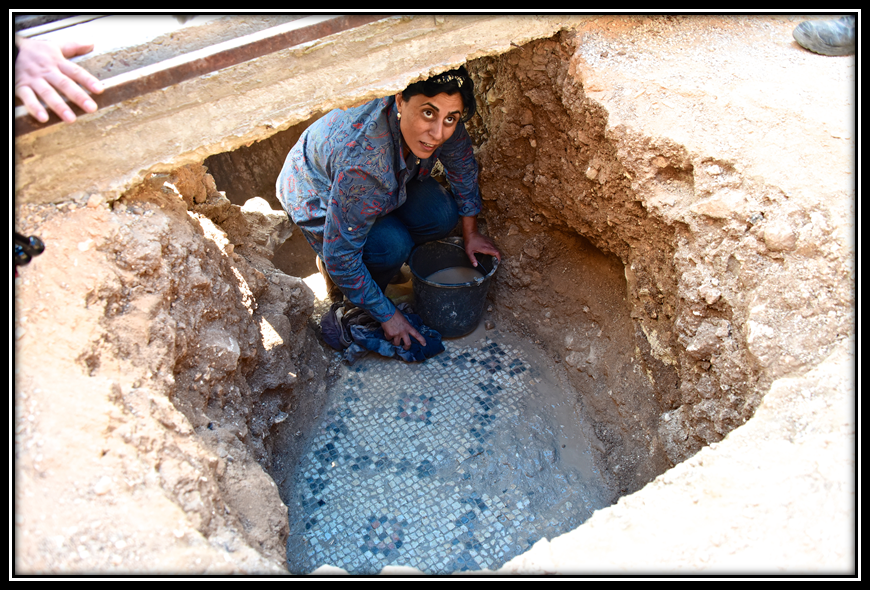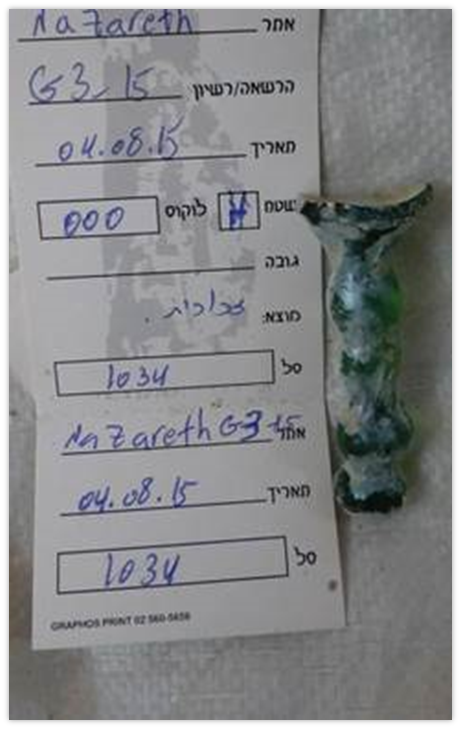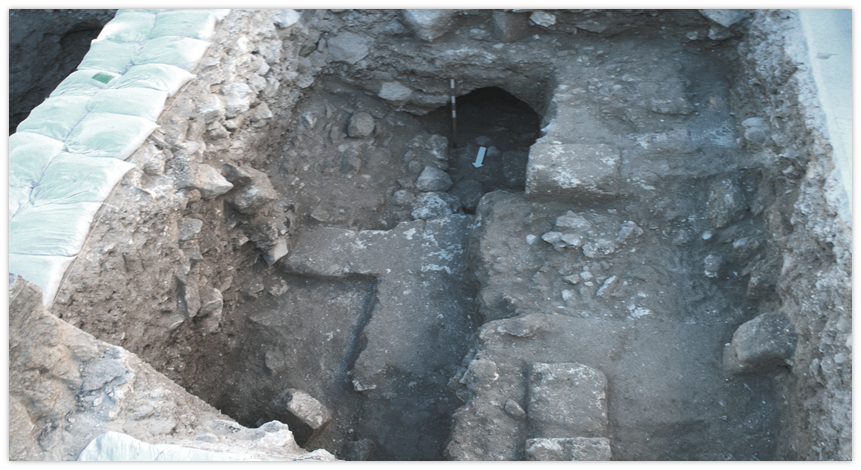 LCL’s very own Maha Darawsha, Professor of Arabic Language, Culture and archaeologist, spoke on March 23rd about her groundbreaking work – in both the literal and figurative sense – uncovering what is beleived to be a lost Byzantine church behind the existence Greek Orthodox church of the Annunciation in Nazareth, Israel. This was the first season of excavations at the site, which had been surveyed in 2012 but was never excavated.
LCL’s very own Maha Darawsha, Professor of Arabic Language, Culture and archaeologist, spoke on March 23rd about her groundbreaking work – in both the literal and figurative sense – uncovering what is beleived to be a lost Byzantine church behind the existence Greek Orthodox church of the Annunciation in Nazareth, Israel. This was the first season of excavations at the site, which had been surveyed in 2012 but was never excavated.
Her ongoing work on the surrounding area of the church, which began in 2003, has unearthed small sections of ornate mosaic flooring in several test pits that are most likely the remnants of a Byzantine-era structure destroyed by Persian invaders sometime in 614 CE. This discovery is especially salient in that all indications point to this church as the one which early Christian and Muslim texts identify as having been constructed on the sight of the Virgin Mary’s water well. The church’s proximity to the Spring of the Virgin, a water source that continued to serve the local Nazareene community until the late 19th century, serves to support Professor Darawsha’s claims. Some of the mosaics that she has found 1.5 meters below the courtyad surface have suffered damage from recent building projects, but the evidence that remains is sufficient to surmise that Darawsha has encountered the Narthex of the Greek Orthodox church that affiliated with the Annunciation mentioned in both the Gospel of Luke and the Qura’n.
According to Professor Darawsha,
It seems that we have revealed a fairly large public building whose main hall has a width of 6.5 to 7m. While its true length is unknown, it measures at least 11m on the east-west axis. The building is dated to the late Byzantine period (6-7 centuries AD). Either the structure itself, or at least this narthex pattern paved with a coarse mosaic floors, is typical of churches of the relevant period. The building underwent a phase of repairs close to the period of floor 135, and these floors belong to a later structure. Beneath the walls appears to be a magnificent building dating back to earlier period whose floors had not yet been discovered. This discovery is very similar to finding glass, glassware, and window panes typical of churches from the Byzantine period (the initial information was mentioned by Ms. Rachel Pollack). This findings are typical of public buildings and not of residential homes.
Therefore, it seems that we have at least two church buildings from the Byzantine period. The first one from end of the Byzantine period, and the second church that was rebuilt after the Persian conquest in 614 CE.

In future visits to the site, Professor Darawsha hopes to discover the remainder of the church – although she thinks it probable that the nave has already been destroyed by illegal excavation in 1980s – and to confirm beyond a doubt that this is in fact the church built on top the well of the Virgin Mary.
The 2015 excavations were sponsored by the University Hartford (CT) and the Greek Orthodox Council in Nazareth (Israel), and directed by Richard Freund (University of Hartford, CT), Maha Darawsha (University of Connecticut), and Shalom Yanklevitz (University of Haifa, Israel). Assisting staff members were geophysicists Harry M. Jol (University of Wisconsin, Eau Claire) and Paul Bauman (Worley Parsons Company, Canada), surveyor Philip Reeder (Duquesne University, PA), field photographer Bennett Greenspan, and Michal Artzy (University of Haifa’s Hatter Laboratory, Recanati Institute for Maritime Studies, Israel).



